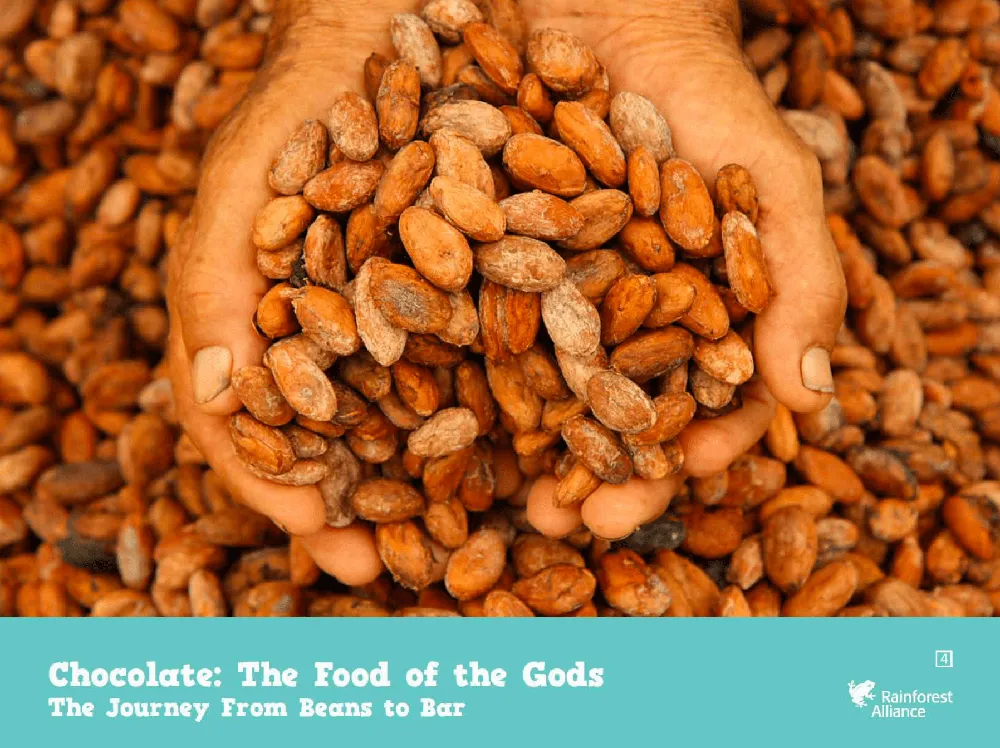Chocolate: The Journey From Beans to Bar
Aztecs and Mayans first created xocolatl, a hot chocolate drink often mixed with vanilla or chili peppers. Cocoa beans were so highly valued, they were used as money until the 1800s. Ecuador was once the primary producer of cocoa, but today about 80 percent is grown in the West African nations of Côte d’Ivoire and Ghana.
Theobroma cacao: the Cacao Tree
Cocoa beans come from the cacao tree. The cocoa belt is found exclusively around the equator, with most cocoa trees growing within 10° of the equator. Cacao trees need a humid climate with a lot of rain. They grow best in the partial shade of large rainforest trees. The cacao tree is an evergreen that grows to be 15–25 feet tall. The fruit, which is called a pod, grows directly from the trunk and can reach 4–12 inches in length. The pods ripen into a variety of colors such as red, yellow and purple.
Each pod contains 20–60 cocoa beans, enclosed by sweet pulp. Because cacao trees tolerate the shade of taller rainforest trees, the rainforest does not need to be destroyed to grow cocoa. Each tree produces only 50–60 pods a year, yielding 15–20 pounds of beans. A single pod can contain 20–40 beans, and it takes around 400 beans to make only one pound of chocolate!
And now, let us follow the production of a chocolate bar from the bean to our taste buds...
Harvest
Harvest takes place twice a year from November to January and May to July. The fruit is hand-picked to protect the trees. Once harvested from the trees, the pods are opened and their seeds are removed.
Fermentation
First, the beans and pulp are laid in fermentation boxes. The process of fermentation produces heat, requiring the beans to be stirred. At the end of the five-day fermentation process, the beans become brown, bitterness subsides, and the flavor develops.
Drying
After fermentation, the beans still contain too much water to be turned into chocolate. The beans are spread out in the sunshine to dry. Most beans are sun-dried for up to 14 days. After drying, the beans are inspected and separated.
Roasting
Roasting takes place at 210° F for 10–15 minutes. Roasting sterilizes the beans, enhances flavor, and makes the next step much easier.
Winnowing
Winnowing is the process of taking the shells off of the beans. What is left over is the “nib,” the most desired part of the bean.
Grinding
The nibs are then ground, either by machine or between two stones. A liquid mass called cocoa liquor is produced. With more grinding and the addition of sugar, chocolate is made!
Conching
Conching is the process of mixing the cocoa mass (not yet chocolate). It is continuously mixed at a certain temperature to develop flavor, remove moisture and break down large pieces. This can take hours to days, depending on the desired outcome. The finest chocolates are conched for five days.
Tempering
The next step is tempering. The chocolate is slowly heated and cooled, allowing the cocoa mass to solidify and stabilize. Without tempering, the chocolate would separate and would not harden well.
Chocolate!
Today, Americans consume 11.7 pounds of chocolate per person each year! Cocoa is the world’s third most traded agricultural product after coffee and sugar.
